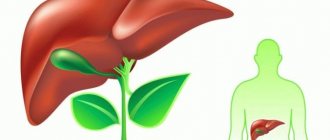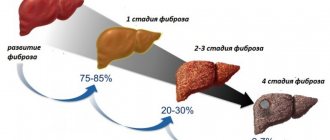What is drunkenness? Who is a person who can be called a drunkard?
In everyday life, a drunkard is considered to be someone who is constantly seen “tipsy” and smelling of alcohol. If not every day, then often. How does narcology look at this problem?
Please note: despite the fact that ordinary people consider drinking alcohol in significant quantities to be drunkenness, most specialists working in this field consider any intake of alcohol to be drunkenness. And it doesn’t matter whether you drink at least once a day, at least once a year, at least for the first time in your life. That is, if he took a dose, it means he was drunk. But is this a disease? Of course not. Not yet…..
Why do people start drinking
We recommend reading: Features of women's, children's and elderly alcoholism Treatment of alcoholism Symptoms and consequences of alcoholism
The first time the motive is the same for everyone - imitation. I really want to try something that has been forbidden until now, to feel on the “level” of others. Moreover, the friends around me instill the opinion: if you haven’t tried it, it means you’re inferior. Under the weight of these desires and proposals, a person picks up his “starter” glass. There are only a few people who like the very first dose. Most often, a beginner does not feel any taste or pleasant sensations. But after a short time, lightness appears in the body, clarity in the head, it becomes at ease, good, cheerful. A state called euphoria occurs. And if after it there were no signs of poisoning, then then you are tempted to repeat it...
This is where the main thing begins: after desire comes habit, and after habit comes dependence: psychological, and then deeper – physical.
The active component of any alcoholic drink - ethanol - is absorbed in the gastrointestinal tract and then comes into contact with the nerve cells of the brain. Thus, alcoholic drinks affect the functions of the neurochemical systems of the brain. Thus, the founder of the scientific school of medical and biological problems of addiction, I. P. Anokhina, argues that, as in the case of nicotine addiction, the formation of alcohol dependence is facilitated by the influence of ethanol on catecholamine, in particular dopamine, mediation in the area of localization of brain reinforcement systems. An “alcohol center” is formed in the brain, the impulses of which begin to control human emotions, mood and desires. The cells of the nervous system cannot withstand and die under the influence of alcohol poison, irreversible changes occur...
How does this process happen? Is everyone really doomed to alcoholic “slavery”? After all, you can drink “culturally” - use small doses and rarely.
Psychologist, cognitive psychotherapist, V.A. talks about the causes of alcoholism. Tsygankov:
Comparison
If they say about a person that he is a drunkard, it means, first of all, his personal qualities that cause trouble for others. Society condemns people who drink regularly because they cannot be reliable partners, are unable to control their behavior, and, moreover, have a repulsive appearance.
However, in the ordinary mind, a drunkard, compared to an alcoholic, is not so unpleasant and hopeless. It is believed that he always has a chance to get rid of the desire to see the bottom of the bottle - he can return to normal life as a person with high self-esteem and adequate behavior.
At the level of average thinking, an alcoholic is a death sentence. People with such a shameful stigma are considered the scum of society, causing not pity, but contempt. Even a heavy drinker, compared to an alcoholic, in the eyes of many looks like a degraded person, but still retains some attractiveness.
It's a delusion. Between the synonyms alcoholic and drunkard one can put a sign of absolute equality.
From a medical point of view, an alcoholic is a person who drinks alcohol immoderately in order to achieve a state of euphoria that accompanies one of the stages of alcohol absorption by the body. The regularity of drinking strong drinks and the amount drunk at one time are important only as indicators of the degree of alcohol dependence.
At the first stage, it occurs on a psychological level: a person just wants to drink to relieve stress or improve their mood. A certain dose of alcohol makes him relaxed and eloquent, although it often causes a surge of aggression and a desire to “sort things out.” “You are turning into a drunkard,” some will say. “You are already sick,” the doctors will state and sign the diagnosis: “Alcoholism.”
At the second stage, alcoholics clearly show all the signs of this serious illness. Not only does a stable psychological dependence develop, when the desire to drink becomes irresistible, but also a physical one: the cells can no longer cope without alcohol doping, which the body signals with repeated hangovers and depressive states.
At the third stage of alcoholism, a complete disintegration of the personality occurs and a severe physical condition develops, when, under the influence of alcohol, nerve tissues and brain cells are destroyed, and irreversible destructive processes associated with the disintegration of liver cells and damage to all vital organs and systems begin.
“Poor drunkard,” the old neighbors will regret. “A complete alcoholic,” recent acquaintances will frown in disgust. “He’s seriously ill,” the doctors will say. Everyone will be right.
Classification of drunkenness
Let's consider the accepted classification of this phenomenon:
- Group I. It includes non-drinkers (abstinents), or practically non-drinkers. The latter include those who drink very little, no more than 2-3 times a year, and then under strong pressure from others, without experiencing any pleasant sensations from alcohol and without trying to “repeat”.
Some of these people feel sick even from a small dose of alcohol; they have a categorically negative attitude towards alcohol. In some individuals, complete intolerance to alcoholic beverages occurs, caused by a congenital deficiency of the enzyme - alcohol dehydrogenase, which causes the breakdown of alcohol into its final metabolites - water and carbon dioxide.
- Group II – episodic drunkenness. This includes those who can afford to drink a small amount of alcohol, usually weak (wine, champagne), once every two to three months. Such a person will sit at the table sober and get up from it the same way.
All that can be achieved with such alcohol consumption is a mild degree of intoxication (euphoria). This group does not like deeper degrees. Having once experienced them, the occasional drinker tries in every possible way to avoid repetition. If you want to experience a more “strong” euphoria, then you can safely include yourself in the next group.
- Group III – situational drunkenness. In this version they drink more often. The amount of alcohol increases. Drinks are also getting stronger; more and more drinkers are beginning to prefer vodka, cognac, tequila, and other high-proof alcohols.
Moderate degrees of intoxication appear, the anticipation of upcoming alcoholism causes an elevated mood, and “resistance” to the dose increases. If previously 100 ml of vodka was quite enough, now the “degree of comfort” is 300 ml. An illusion of health arises (you can drink a lot and not get drunk).
Although in fact we are only talking about getting used to the poison. A person who often drinks alcohol develops an energy surplus, since alcohol is very energy-intensive, as a result of which the food taken is deposited in the “depot” and the person gains weight. Facial vascular paralysis gives the drinker a healthy, “pink” appearance.
But this is not a disease yet. It’s no longer the norm, but it’s not alcoholism either. Just situational drunkenness. What happens next? If a person does not come to his senses and say to himself: “enough is enough,” he moves on to the next group.
- Group IV – malicious drunkenness. The dose for one alcoholization increases to 500 ml. Excesses with this amount are already quite frequent, up to 2-3 times a week. Between them there may be “light” periods of sobriety, or taking small doses - 100-150 ml, as well as drinking lighter beer and wine.
It should be noted that those who drink vodka are more skeptical about wine. In group IV, the phase of “euphoria” - high spirits, talkativeness, a feeling of complete comfort and carefreeness (for the sake of which they try to achieve intoxication) lasts no longer 2-3 hours, as in the first groups, but 6-8 hours. The gag reflex fades. Looking at people who belong to the evil group, no one makes mistakes anymore. We are talking about a drunkard.
Family and work conflicts arise, a person becomes unnecessary, cheeky, and traits of rudeness, rudeness, and flat humor increasingly creep into his behavior. This is all a consequence of brain damage.
But this is not a disease yet. At this stage, the drinker can still stop himself and begin to lead a completely sober life or move back to group 3 or 2. But if it can no longer, then, most likely, we are already talking about a disease - alcoholism .
Statistics of alcohol consumption in the world per capita in liters
Please note: what is the difference between drunkenness and alcoholism? The main thing is that a drunkard can stop and “roll back” to the previous stages, but an alcoholic can no longer do so. He has only two options - to drink or not to drink at all, otherwise the development and progression of the disease - alcoholism - is inevitable.
Distinguishing Features
A drunkard and an alcoholic are not synonymous with the same concept.
Let's try to figure out what their distinctive features are. But we warn you right away: the abuse of alcohol-containing drinks is harmful to health in any quantity. The daily intake should not exceed 50 ml for men and no more than 25 ml for women. Anything consumed in excess of the prescription becomes poisonous to the body. A few years ago, before scientific definitions appeared, anyone who drank was called a drunkard. These could be both simple merry fellows under the influence of alcohol, and bitter, degenerate drunkards. Modern scientists qualify drunkenness as drinking large quantities of alcohol. This is still independence, but the last step before it.
The drunkard's body is not accustomed to alcohol. The effect of ethyl alcohol on the body is similar to the effect of drugs, so withdrawal symptoms require continued use. A moderate drinker stops drinking at any time. The amount of alcohol consumed is controlled. Losing consciousness is not the goal of the libation, so being slightly “tipsy” is enough.
A drunkard is an “esthete” who finds pleasure in high-quality alcohol. He will not drink substitute or cologne. Such a person approaches the choice of alcohol responsibly, giving preference to taste or brand criteria. Not least important is the company where the libations take place. You won't see drunkards at a table with degenerate alcoholics.
But don't think that such people won't become addicted to ethanol. Long-term drunkenness makes the body tolerant of alcohol, which will gradually develop into a painful stage.
Alcoholism is a painful addiction
Alcoholism is not only a drunken drunk who takes the last plate out of the house to exchange it for a portion of a surrogate drink. There are three stages of development of the disease, which are not always noticeable to others.
- No symptoms. Psychological and physical dependence has not yet been observed, but the person does not know how to drink: without measure and out of place. There are any reasons that justify drinking a glass. In the morning, a non-critical hangover syndrome is observed. Sometimes amnesia and aggression appear after drinking.
- The appearance of the first symptoms. Added to the above is a sign of alcoholism – withdrawal syndrome. A hangover does not go away without a dose of ethanol. This period is characterized by binge drinking - many days of libations, from which the patient is difficult to remove. All life values (family, career) fade into the background. Changing the critical attitude to what is happening.
- Final stage. Long-term binges with psychophysical personality degradation. Multi-day drinking bouts with mandatory hangovers cannot be interrupted without medical intervention. Alcoholic psychoses with hallucinations and aggression. The patient's body is depleted by the destructive effects of ethanol. A large dose is not needed to achieve a state of intoxication.
“This is a painful addiction when a new portion of alcohol is consumed while the effect of the previously taken portion still remains.”
Due to physiological characteristics, women and adolescents are more susceptible to the effects of alcohol. Particularly dangerous is “beer alcoholism,” which is becoming widespread. In our country, a foamy drink is considered a harmless indulgence, but the concentration of alcohol in it is not inferior to strong liquor. The difference is unnoticeable due to the low degree content.
What is hidden behind the concept of “alcoholism”?
What is this pathology? Let's give it a definition:
Alcoholism is a biosocial, mental disease that occurs with chronic alcohol poisoning, signs of addiction and pathological addiction to alcohol. Over time, there is degradation of the drinker and the development of severe concomitant diseases.
In medicine, the term “chronic alcoholism” is used, which was introduced into practice in the 19th century by the Swedish doctor Magnus Huss.
In everyday life, the name “alcoholism” is used in a broader concept, combining it with drunkenness.
Classification of alcoholism
In its classical development, alcoholism goes through three stages:
- Primary – lasting from 1 to 6 years. It can be shortened to a year or last a lifetime, with a slowly progressive course.
- Developed clinical manifestations. Most alcoholics are in this stage, one lasts the longest period, on average 10-12 years.
- The final one lasts about 5-7 years.
You will receive more detailed information about the stages of alcoholism by watching a video review by psychologist, cognitive psychotherapist Vladimir Tsygankov:
Forms of drunkenness
Now our task is to get acquainted with the forms of drunkenness in alcoholism. We will talk about methods of drinking alcohol that can occur at all stages of the disease.
Experts highlight:
- One-day drunkenness with a hangover syndrome. The patient drinks a large dose of alcohol over one day. In the morning, experiencing withdrawal, he gets a hangover, and then doesn’t drink at all for a period of time. This form is most common in stage 1 alcoholism.
- Intermittent drunkenness with hangover syndrome. An alcoholic drinks alcoholic beverages for several days in a row without achieving a severe degree of intoxication. But in the morning you need to “get over your hangover.” Performance is maintained. This type of alcoholization is also inherent in stage 1.
- Constant drunkenness. In this form, the addicted person drinks daily for a long period of time. There is definitely a hangover. Tolerance to alcohol is steadily increasing. This type of abuse can occur at all stages of alcoholism.
- Binge drinking. One of the most severe forms of alcoholism. Binge begins during a period of sobriety. The patient completely withdraws from life and drinks around the clock. Drinks day and night, practically not eating. Usually he stays at home and only goes outside for the next dose. The binge can last for several days or weeks, until a period of complete exhaustion sets in, and the gag reflex to alcohol reappears. Coming out of binge drinking is very difficult; it is at this moment that the most severe complications of alcoholism arise - psychosis. Then comes a period of sobriety, which can last several days, often weeks or even months.
Please note: you should not confuse true binge drinking and pseudo-binge drinking , milder cases in which alcoholics drink while they have the means, then live soberly. This option is often found among factory workers who had the opportunity to drink alcohol twice a month - during pay and advance payments.
- Intermittent drunkenness is the most severe type of alcohol use, characteristic of the malignant course of the disease. With this form of alcoholism, constant drunkenness is layered with binges.
Stage three, the most severe
The body's resistance to alcohol consumption quickly decreases. A person at this stage only needs to drink two glasses and become very drunk, but he continues to drink until he passes out. Due to the daily consumption of alcohol, health problems and degradation of the individual begin. This is no longer an alcoholic, but a real drunk.
Alcoholism is a disease that requires treatment. The drunk cannot stop drinking without outside help or reduce his dose. Changes begin in his body that require the presence of alcohol in large quantities constantly, so the drunk cannot help but drink. This is not just a disease, it progresses and inevitably leads to the complete destruction of the body and personality.
You can get rid of drunkenness, but you cannot completely recover from alcohol addiction. After treatment, an alcoholic can lead a sober lifestyle, but only until the first drink, which can return him to binge drinking, since there is no other remedy for binge drinking other than his own desire not to drink. A drunkard can partially control himself, but an alcoholic is controlled by illness.
To determine whether a drinker is a drunkard or already an alcoholic, you just need to consult a doctor - a narcologist. The doctor cannot examine the patient without the desire of the patient. Everyone must decide for themselves whether they need the help of a doctor.
Most people believe that it is impossible to get free treatment in our healthcare system. They will make an inaccurate diagnosis, treat you for the wrong disease, cure you or send you to a mental hospital. And paid treatment is very expensive and not affordable for many. Therefore, people are treated for alcoholism with folk remedies, herbs, spells, and removal of damage. However, if you do not consult a specialist in time, drunkenness can turn from a habit into a progressive disease.
Alcohol is an evil that stubbornly and cruelly cripples the health of a huge number of people, destroys all human organs (including the brain), often causing premature death. All these changes do not begin immediately. At first they are almost invisible, but gradually the disease progresses. And even the cause of death is often explained by some other diseases, although alcoholism is the basis.
Drunkard or alcoholic? Horseradish is not sweeter than radish: both words are directly related to a person who is unable to overcome the destructive passion for alcohol. Alcohol addiction destroys personality, brings suffering to loved ones and is an absolute social evil. In medicine, it is considered as a serious illness, at the level of everyday and family relationships - as a sharply negative factor. Hence the difference in the meaning of the words “drunkard” and “alcoholic.”
Degrees of intoxication
Both in everyday drunkenness and in alcoholism, there are three degrees of intoxication:
- I degree (mild). External signs of intoxication are subtle. There is an improved mood, talkativeness, relaxedness, and ease. But even with a mild degree, inhibited reactions are observed. Blood alcohol content 0.5 – 1.5 ‰;
- II degree of intoxication (medium). It is observed in a person with pronounced euphoria, or vice versa – anger, depression, inappropriate behavior, attacks of aggression, complete disinhibition, inflated self-esteem, self-praise. Externally – red face, impaired speech and gait, uncoordinated movements. A drunk person gives off a strong smell of alcohol. Alcohol concentration is from 1.5 to 2.5 ‰. Contents above these numbers indicate the presence of severe intoxication.
- III degree (severe). With this degree of intoxication, the drunk cannot maintain balance when walking, speech is difficult and slurred, there is a disturbance in orientation, failure to recognize people, and stunnedness. Gradually, the patient develops a narcotic sleep, which can turn into a coma and end in death. Blood alcohol content is 3-5 ‰. Above these values, poisoning is fatal.
A sad fact can be considered that indicates that 80% of young people under 16-18 years of age have already been introduced to alcohol. The consumption of beer and low-alcohol drinks among young people is growing.
Based on what data can we understand that the patient is no longer just a drunkard, but an alcoholic? The answer to this question will be found in the clinical manifestations of the stages of alcoholism, which we will talk about in the next article.
Important: the diagnosis of “alcoholism” can only be made by a psychiatrist-narcologist and no one else.
Lotin Alexander, narcologist
9, total, today
( 175 votes, average: 4.69 out of 5)
Affective states: concept, types, signs
Types of drugs and their effects
Related Posts
Differential diagnosis with non-alcoholic fatty lesion
Non-alcoholic steatohepatitis or fatty liver disease (NAFLD) is a fairly common type of pathology. In different countries, it affects from ¼ to half of the population.
It is observed more often in women aged 40–60 years, in children with metabolic disorders accompanying:
- obesity;
- hypertension;
- diabetes;
- hormonal disorders;
- taking corticosteroid medications, contraceptives;
- poor nutrition (both the predominance of easily digestible carbohydrates and fats, and sudden weight loss during fasting).
Acute fatty hepatosis can be triggered by pregnancy. Disease activation factors include:
- chronic pancreatitis;
- stomach or duodenal ulcer:
- gout;
- lung diseases;
- psoriasis;
- systemic pathology of connective tissue.
The process of disruption of fat metabolism begins with the accumulation of triglycerides in the liver tissue
Normally, triglycerides are broken down to release energy. In pathological conditions, their excessive quantity can:
- deposited inside the cytoplasm of cells;
- disrupt the integrity of cell membranes;
- activate fibrosis processes.
Patients complain:
- for weakness, fatigue;
- heaviness and pain in the abdomen;
- headache;
- bowel disorders.
In advanced cases, an enlarged liver and spleen are detected. The important differences are:
- no long-term alcohol history;
- increased weight of patients;
- a significant increase in triglycerides in the blood test;
- hyperglycemia;
- 40% of patients have skin pigmentation in the neck and armpits.
Among the clinical manifestations, jaundice indicates concomitant hepatitis, which is rare.











